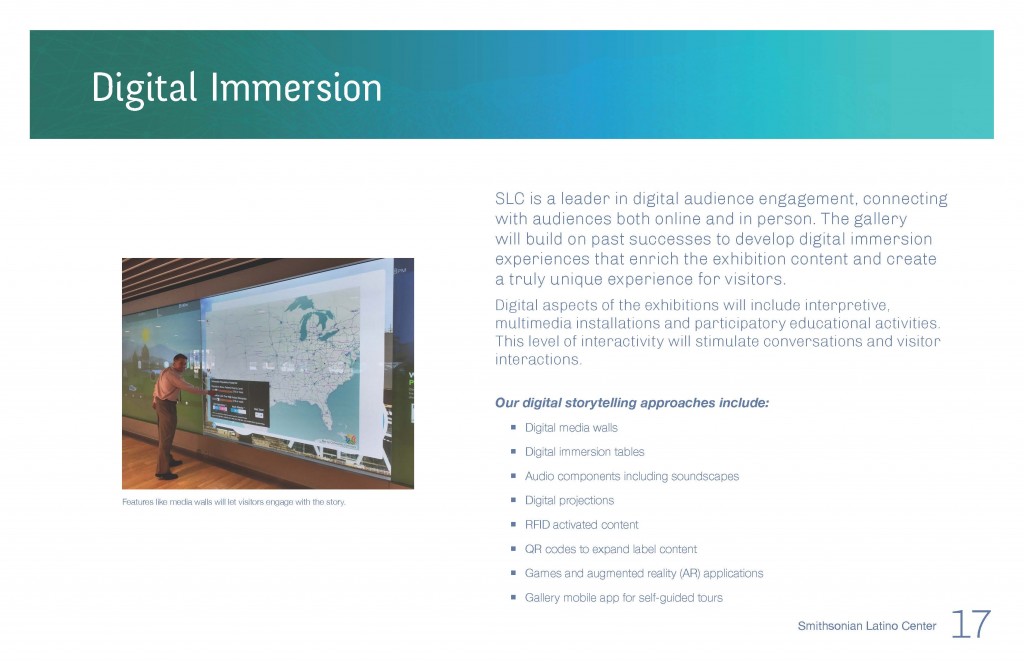Earlier this year, Smithsonian Exhibits collaborated with the Smithsonian Latino Center (SLC) on an interpretive master plan for their new gallery. Chances are, that if you read this far, you’re wondering what exactly is an interpretive master plan.
The short version is that it is a tool an organization uses to reach a specific goal. If you’re familiar with strategic plans, interpretive master plans are in the same family. If a strategic plan is an interviewer asking you “where do you see yourself in five years?” the interpretive master plan is your coworker saying “how are we going to get this project done?”
A strategic plan is for longer term planning within an organization. It identifies a number of goals and spells out a plan for the organization for the next several years. The interpretive master plan, on the other hand, is a preliminary study that will help an organization reach one very big, very specific goal. Eric Christiansen, Smithsonian Exhibits Chief of Design, likened an interpretive master plan to the North Star: “Interpretive master plans create a fixed reference point that all things can be measured against to make sure you stay on track.”
For the Smithsonian Latino Center Gallery, that meant brainstorming sessions and building on the work SLC had already done identifying exhibition topics and educational programming opportunities. We met frequently, using our meetings to discuss everything from intended audiences to what critical questions the exhibitions should address. Notes were taken, circulated, reviewed. Once everyone was on the same page and happy with the direction, Smithsonian Exhibits wrote and designed a guiding document that SLC is using as it makes its new gallery a reality.
What sort of information is in an interpretive master plan?
Like exhibitions, no two plans are going to be exactly alike, although there are some common elements. In addition to establishing goals and objectives, the plan will identify stakeholders and audiences, develop themes and take-away messages, and identify programming opportunities.
For this project, we included exhibition concepts, in-gallery learning experiences, educational outreach, and digital outreach. Now SLC is using their interpretive master plan to aid in their exhibition development. They’ve also been able to share it with the project’s designers to get them up to speed. As new people come on board the project, they can review the plan and easily see “This is where we’re going. And this is how we get there.”


